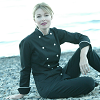Here in Canada, offically we are on the metric system (SI) but in practice it just depends on what you're measuring as we are influenced heavily by American stuff. Distance = Km, Weight = Lbs, Height = Ft. Most of us don't know our weight in kilograms.
What units do you usually measure?
- Login to post comments
i use SI every day in reality, but as far as inflation daydreams/RP goes, i go by what i've grown up to reading in stories, past RP's, comics, etc.. which is the SAE unit of measurement. inches, feet, miles, AU'S etc... i'm just used to it, and it sits well in my brain and i can picture it much better. its hard to explain...
European here. For me its easier to understand terms in meters (cm, dm, km), liters, kilo gram Ect.
But most media of this kink is american, so i picture a inflatee using ters as: inch, gallon, feet. So i am a bit mixed about it.
I've used inches a lot, feet sometimes, yards only twice.
A lot of authors frequently use precise measurements when they first start writing, but move away from them as refine their style. That's what I did. I've found that describing size in in terms of practical effects is more expressive. Describing a woman as "an eight-foot tall sphere" doesn't have as much impact as "she nearly filled the room from floor to ceilling." "Her bustline swelled to seventy inches" isn't as descriptive as "her breasts had grown too large for her to reach around them."
I've also moved away from using numeric measurements most of the time. Part of that is because I'm an American douchebag who doesn't want to put forth the effort to make those measurements more understandable to the rest of the world. Part of that is because stories can get too bogged down by too many things and being hyper-specific with measurements is one of those things.
Ells. I mean, why is that even a question?
;)
I get your dilemma. Personally I don't mind the unit used (indeed, "she grew X inches bigger" type description bigger can be fun) but I really like when it's...
a) grow compared to an X original size (Her boobs were twice as big / three times bigger / ten times their original sizes, etc.)
b) grow "in comparison" (her boobs were the size of grapefruit / her breast were now swollen as large as watermellons / they reached the size of gigantic beach balls / outgrew the width of hot air balloons, etc.)
I find such descriptions allow our imagination to run wild and bring lots of visual images!
Intresting point. I have to say i agree with you
pump shots or with a timer if i get inflated by a machine. But in canada we use metric






If it's writing in an inflation context, I actually try not to rely on measurements much at all. I'll put down the occasional (and snobby, American-centric) feet or inches occasionally, but I find it worth it even for my own reading immersion to use metaphors and comparative imagery more often. Mentioning a specific figure in literature makes me think that readers have to imagine unwinding a measuring tape in their head.
So instead of depicting inflation in one paragraph that says five feet around, another paragraph at seven feet, and a finish at ten feet or something --
I might do phrases like as tall as they could stand, wider than a pair of barn doors, the height of the ceiling, the size of a backyard shed. My favorite that I still need to work into a story somewhere is a dinner platter as large as a carriage wheel.
It is a little more vague and artsy than what most people are used to, but there's some perceptions about size and shape that you can let the reader fill in for themselves. You can creatively cut corners by using the surrounding space as benchmarks too; describe a grand, spacious throne room in a castle, and then you can just say down the line whoever's filling up is stuffing all the available room. In the end, I think the more immediate and feasible you can make a detail, without relying on repetitive figures, the easier it is to read and the audience can keep skimming along smoothly.
Check out my stories that I've written...!